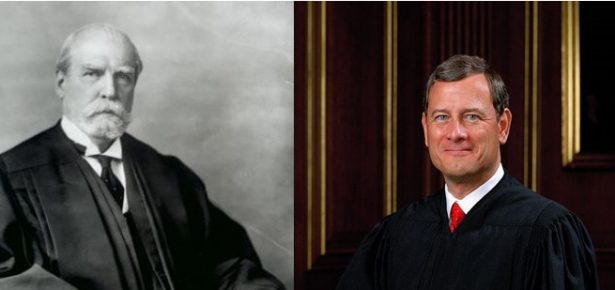
Court-packing is in the air in the United States. Having decisively lost any hope of getting the current Supreme Court to rule in their favor, liberals today have begun to entertain ideas about Court reform that would have seemed fanciful a decade ago.
We’ve been here before. In the mid-1930s the Supreme Court issued a series of decisions blocking important New Deal initiatives and standing in the way of reforms Progressives had long sought. President Franklin Delano Roosevelt responded by proposing to add six new Justices to the Supreme Court – a number precisely calculated to ensure that younger and more liberal appointees would be in the majority. The proposal failed – narrowly, and in part because 1937’s summer heat contributed to a fatal heart attack suffered by Senator Joe Robinson just before the crucial vote was to be taken. Robinson had pushed all of the many Senators in his political debt to support the plan, and his death released them from their obligations.
FDR won the Court battle in the end, though: Justice Willis Van Devanter retired, taking advantage of a change in the pension program for Supreme Court justices that snuck through while the Court-packing plan was attracting all the attention. Perhaps more critically, Chief Justice Charles Evans Hughes and Justice Owen Roberts voted with the Court’s liberals, basically for one Term only. That gave Roosevelt time to appoint several new Justices who were in sync with the New Deal.
The Hughes Court, 1931-1941: From Progressivism to Pluralism provides a detailed account of how the Court got to that point – and then continues the story through Hughes’s retirement in 1941. The book’s first part offers a complex explanation for the Court’s changed position – a “Switch in Time,” as it’s become known – but one driven by the confluence of legal arguments, the facts of the cases the Court heard, personalities, and politics.
The book as a whole, though, tells a rather different story from the conventional one. As its subtitle indicates, the Court was committed to large swathes of Progressive ideology from the beginning of Hughes’s tenure. The largest battles over the constitutionality of the administrative state had been won by the Progressives and – though they regularly staked out advanced positions that the Court rejected – by mid-decade the administrative state was more deeply entrenched than ever. Even more, from the beginning of the decade to the end the Court embarked on its modern course of protecting civil rights and civil liberties because libertarian-minded conservatives suspicious of state power joined with liberals sympathetic to the interests of African Americans and political radicals.
These continuities accompanied significant changes, of course, primarily in the Court’s willingness to accept public regulation of economic actors. As the decade of Hughes’ tenure ended, the Court was beginning to reconceptualize the bases for the government’s role in society, and its role in the government. Attentive to the place that interest groups played in a pluralist society, the Court haltingly began to replace the Progressive commitment to government guided by expert insights into the public good with a vision of policy resulting from fair political competition – a vision hinted at but not fully developed in the famous “Footnote Four” in the Carolene Products case.
Constitutional law in 1941 was quite different from constitutional law when Hughes took the center seat as Chief Justice. But, as with most historical stories that difference reflected the interaction between continuity and change, in personnel, ideology, and doctrine.
Latest Comments
Have your say!